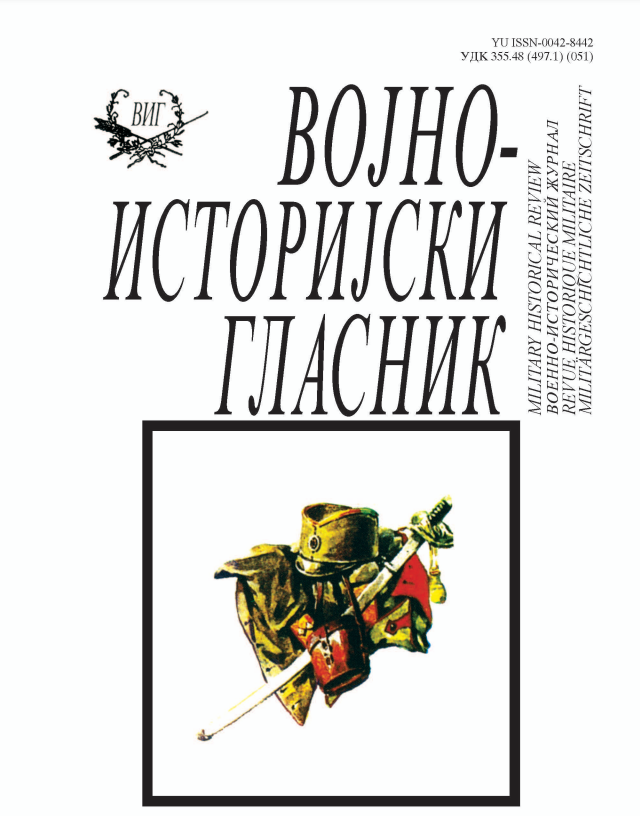КОНЦЕПЦИЈА ’НАОРУЖАНОГ НАРОДА’ У СРБИЈИ 19. ВЕКА – ТЕОРИЈСКИ И ПРАКТИЧНИ УЗОРИ ИЗ ЕВРОПЕ
THE CONCEPT OF ’THE ARMED PEOPLE’ IN 19TH CENTURY SERBIA –THEORETICAL AND PRACTICAL MODELS FROM EUROPE
Author(s): Nenad Ž. PetrovićSubject(s): History, Military history, 18th Century, 19th Century
Published by: Institut za strategijska istraživanja
Keywords: people’s army; standing army; Switzerland; Marxism; People’s Radical Party
Summary/Abstract: At the end of the 19th century there were two basic models of the organization of the military force: people’s army and a standing army (the regular cadre). Since the Franco-Prussian war people started to abandon the concept of the people’s army everywhere, while Switzerland has stayed loyal to this concept to this day. This kind of armed forces had been dominant in the Principality of Serbia until the new law on army was adopted in 1883, when the regular cadre of two years of service was introduced with some privileges for certain categories of recruits. However, even after this, the military and political public demanded to bring back the previous concept of people’s army, especially because people were under the impression of defeat in the war against Bulgaria in 1885. The People’s Radical Party, as the populist and quasi left-wing party, while it belonged to the opposition, supported the mixed system, in which the people’s army would be more dominant. It was motivated by economic, as well as political reasons: smaller expenses for the people’s army and preventing the king to use the standing army against people’s aspirations. The fact is that the Timok Rebellion (Timočka buna) was suppressed by the units of regular cadre, which fought against the people’s army of the rising districts (.srez” in Serbian). Radicals readily emphasized ’the democratic character” of the people’s army as opposed to the monarchist character of the standing army. The supporters of the new model, which had been prevalent in Europe until that time, defended the reform with the national aims of liberation and unification of Serbs, which, according to them, could not be achieved with the help of people’s army. Having taken the power into their hands at the end of 1880s, the radicals did not restore the people’s army, but they turned it into the reserve part of the regular cadre. By comparing the organization of the Swiss people’s army and the Serbian people’s army, at the time when it existed, certain similarities are noticed: territorial organization (cantons in Switzerland and ’the srez” in Serbia); unprofessional officers from the lines of people subject to military conscription; short military training at the beginning of military obligation (for recruits at the age of 20); then calling to yearly maneuvers until the expiration of military obligation (until the age of 44 in Switzerland, and until the age of 50 in Serbia); keeping the arms and equipment at home; the small number of regular cadre and professional officers, who train the officers of the people’s army. Also, it is noticeable that the Marxist theory of the ’armed people” had to be reflected in Serbia as well, especially among the people who were the members of the socialist or radical orientation, such as brothers Jevrem and Svetozar Marković, Jevrem Grujić, Dimitrije Mita Cenić, Vasa Pelagić, Aranđel Raša Milošević…
Journal: Vojnoistorijski glasnik
- Issue Year: 2020
- Issue No: 1
- Page Range: 53-76
- Page Count: 24
- Language: Serbian

